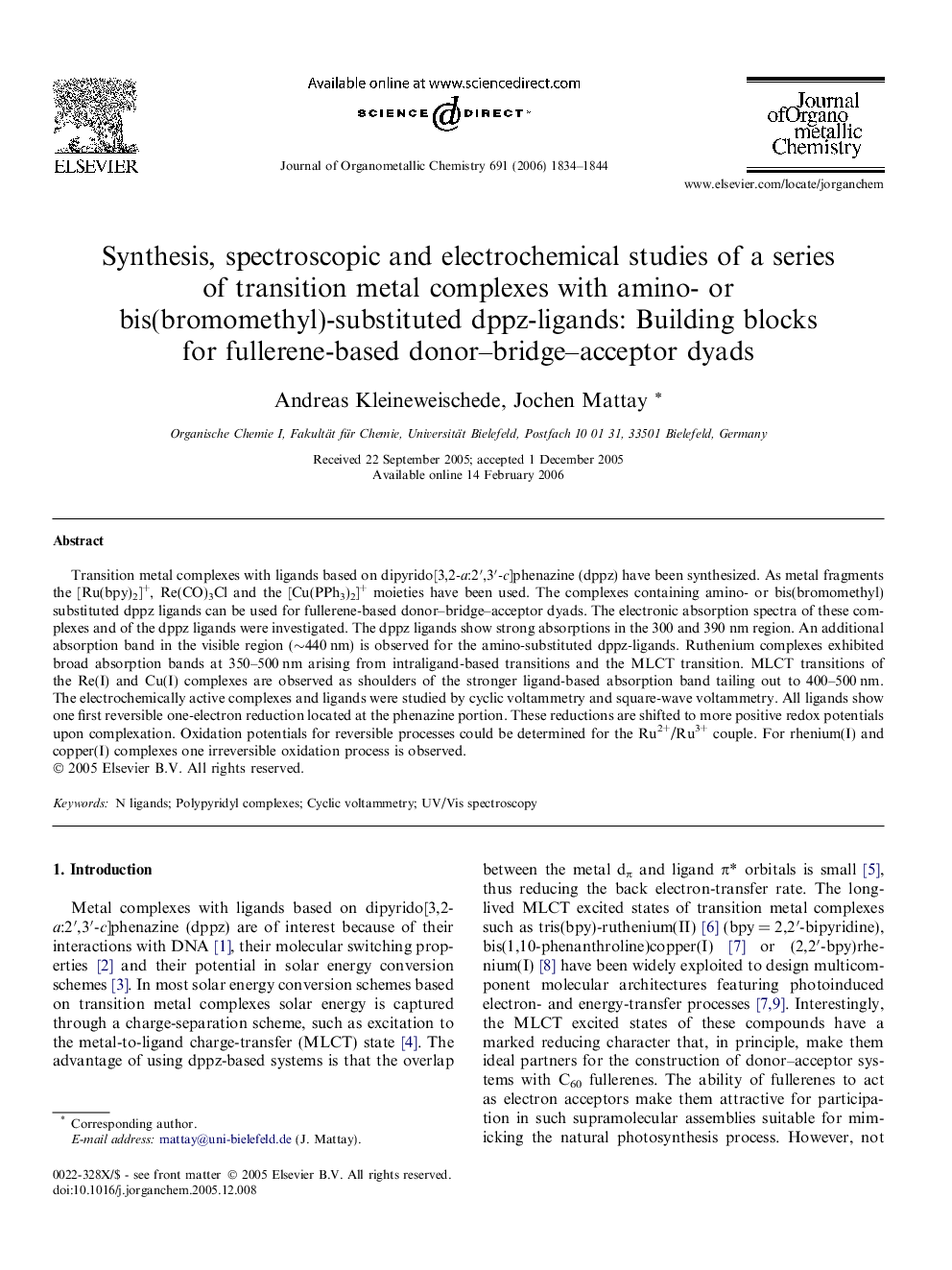| کد مقاله | کد نشریه | سال انتشار | مقاله انگلیسی | نسخه تمام متن |
|---|---|---|---|---|
| 1327046 | 977460 | 2006 | 11 صفحه PDF | دانلود رایگان |

Transition metal complexes with ligands based on dipyrido[3,2-a:2′,3′-c]phenazine (dppz) have been synthesized. As metal fragments the [Ru(bpy)2]+, Re(CO)3Cl and the [Cu(PPh3)2]+ moieties have been used. The complexes containing amino- or bis(bromomethyl) substituted dppz ligands can be used for fullerene-based donor–bridge–acceptor dyads. The electronic absorption spectra of these complexes and of the dppz ligands were investigated. The dppz ligands show strong absorptions in the 300 and 390 nm region. An additional absorption band in the visible region (∼440 nm) is observed for the amino-substituted dppz-ligands. Ruthenium complexes exhibited broad absorption bands at 350–500 nm arising from intraligand-based transitions and the MLCT transition. MLCT transitions of the Re(I) and Cu(I) complexes are observed as shoulders of the stronger ligand-based absorption band tailing out to 400–500 nm. The electrochemically active complexes and ligands were studied by cyclic voltammetry and square-wave voltammetry. All ligands show one first reversible one-electron reduction located at the phenazine portion. These reductions are shifted to more positive redox potentials upon complexation. Oxidation potentials for reversible processes could be determined for the Ru2+/Ru3+ couple. For rhenium(I) and copper(I) complexes one irreversible oxidation process is observed.
Synthesis of polypyridyl complexes of the type (α-diimine)MLn with MLn=Ru(bipy)22+, Re(CO)3Cl, or Cu(PPh3)2 has been described. Nitro-, amino-, and bis(bromomethyl)-substituted dppz derivatives were used as α-diimine ligands. The electronic and electrochemical properties of these complexes have been investigated by UV/Vis spectroscopy and by cyclic voltammetry.Figure optionsDownload as PowerPoint slide
Journal: Journal of Organometallic Chemistry - Volume 691, Issue 9, 15 April 2006, Pages 1834–1844